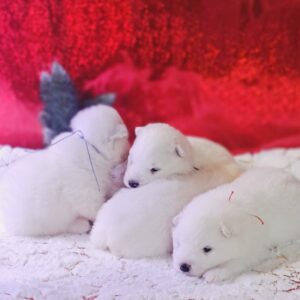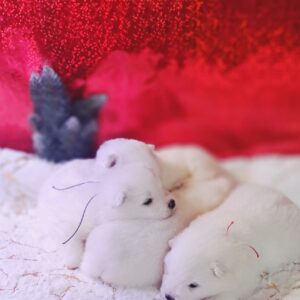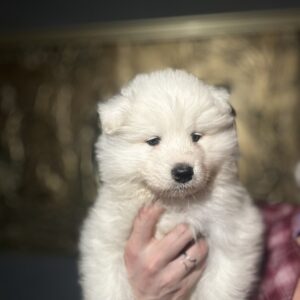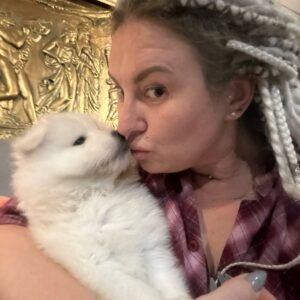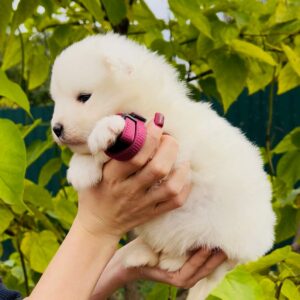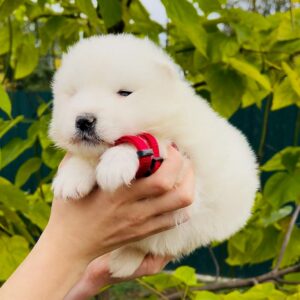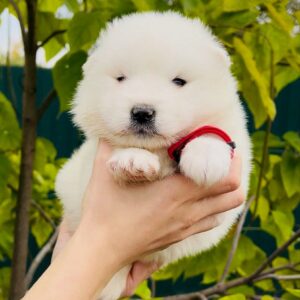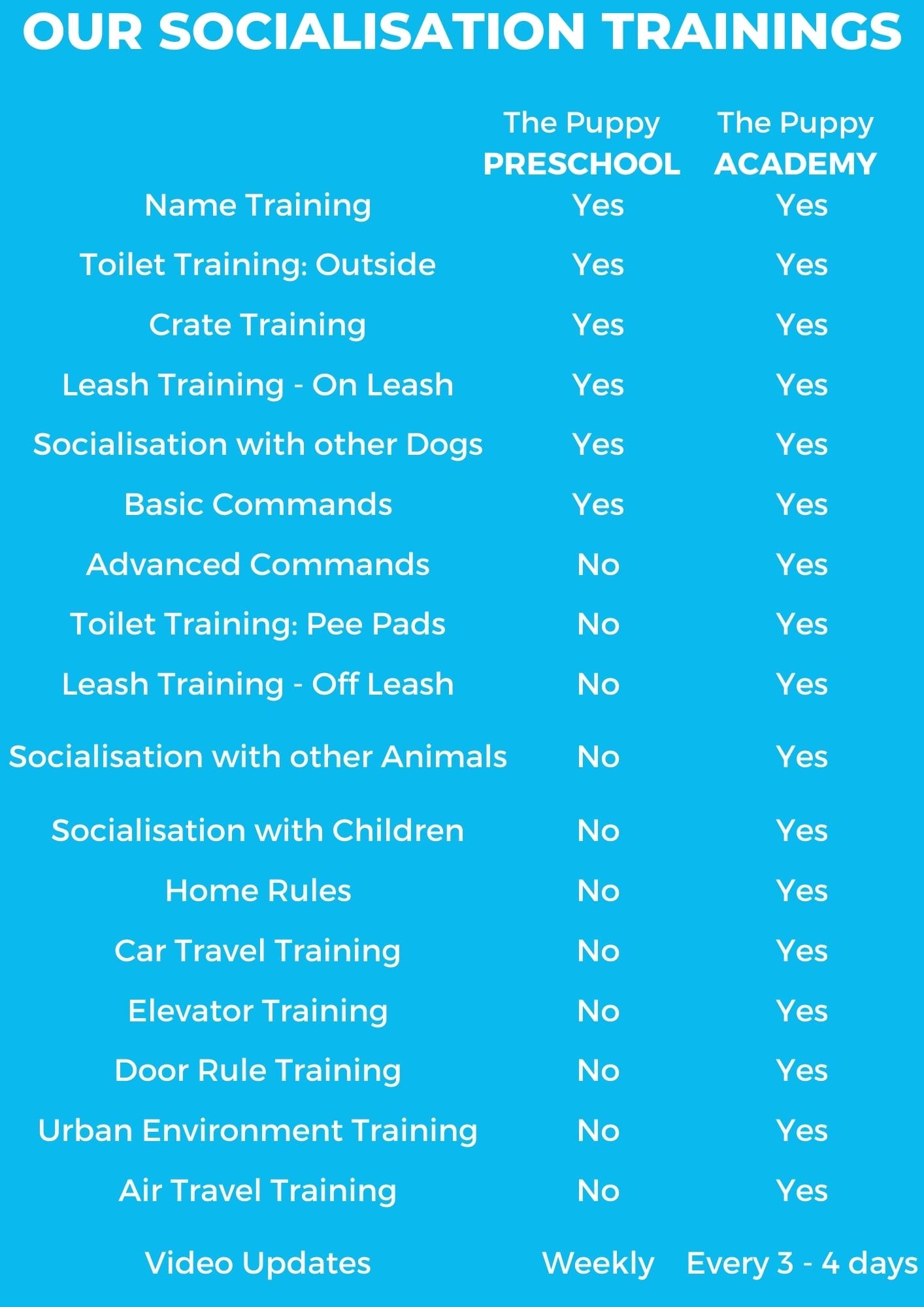
Samoyed
Radiating a dignified, confident and charming air, the Samoyed is a medium sized Spitz breed. These dogs are known to be friendly and open, yet lively and alert.
Samoyeds are usually good for apartment life if sufficiently exercised. They are usually very active indoors and do well in a house with a small garden. However, its thick, lush coat makes it unsuitable for hot environments.
Samoyed breed attributes
About Samoyed breed
Description
Radiating a dignified, confident and charming air, the Samoyed is a medium sized Spitz breed that has a compact yet supple build that gives an impression of power and endurance.
The Samoyed is approximately 5% longer than it is high at the withers. The depth of a Samoyed’s body is also usually slightly less than half the height at its withers. Females also usually have a slightly longer back when compared to males.
The Samoyed has a wedge shaped head that is slightly convex with its broadest part in between the ears. The stop of the head is clearly defined, but not too pronounced giving the dog a slight forehead. The Samoyed’s head tapers gently until it reaches its characteristic well developed black nose. In some individuals the nose is not always black, but fades seasonally. When this happens, it is sad that the dog has a “Winter nose”. The Samoyed has a deep, strong muzzle with a straight nose bridge that is about as long as the dog’s skull. The lips are not drooping but tight fitting, and are also black rimmed. The corners of the mouth also end with a slight curve upwards. The Samoyed’s eyes are dark brown, set apart, and lie well into the eye sockets. The eyelids are also black rimmed and give the eyes a slanting almond shape. The shape of the eyes and the slightly upward curving lips give this breed the well-known “Samoyed smile”. The occlusion of the teeth and structure of the jaw should be in such a way that the dog closes its jaws into a scissor bite. The jaws should also be well muscled and strong. The ears are small and triangular shaped ending in rounded, blunt tips. They are also held erect and set high and well apart due to the Samoyed’s broad skull.
The neck of the dog is strong and of medium length, and carries the Samoyed’s head with pride. The body of the dog is compact yet lithe. The chest of the Samoyed is broad and deep, almost going down to the dog’s elbows. The ribs of the Samoyed have a good spring to them and the withers have to be clearly defined even through all that fur. The Samoyed’s back is of proportionally medium length, muscular and straight transitioning into short, defined and very strong loins, and strong muscular, sloping croup. The belly of the dog should not be hanging and pendulous but should be tucked in giving the dog an athletic profile.
The tail of a Samoyed is set high and should be held bent over its back and sides when alert. It can also be hanging at rest often reaching the level of the hock. The straight and parallel forelimbs of the Samoyed should be muscular and strong boned. The shoulders should be long, strong and sloping from the body so that the front limb comes at an oblique angle while still keeping close to the body. The upper front should also be as long as the shoulder. The forearm at the level of the wrist is strong yet flexible and the leg should continue at a slightly oblique angle further distally from this point. The hind limbs, like the fore limbs, should be straight, parallel and very well-muscled. The Samoyed’s upper thighs are well built, broad and of medium length giving it power as it springs forward. Both the stifle and the hock come at a strong angle, with the hock being held low. The metatarsals of the hind limb should also be short and strong, and should be positioned vertically and parallel to each other. The paws on both the forelimbs and hind limbs are of an oval shape and sport long, flexible toes. All the toes are arched and point forward while not held particularly tightly together. All four of the Samoyed’s feet end in soft elastic pads. It is also suggested for any dewclaws to be surgically removed.
The Samoyed should bear itself in such a way for the gait of the dog to be characterised by strong long strides. The front limbs of the dog provide good reach while the hind limbs provide propulsion and power. While running and moving about, the Samoyed should look limber, tireless and powerful.
Origin: Northern Russia and Siberia.
Look
The Samoyed has a lush, dense, light coloured coat that reminds it’s admirers of northern polar environments. The coat is characterised by a double coat consisting of a dense, short and soft undercoat, and long, harsh, straight guard hairs. In male Samoyeds, the fur arranges itself as a mane around its head, neck and shoulders giving the Samoyed a dramatic, slightly leonine appearance. The hair is usually shorter on the head and front legs, while being longer on the hind legs and tail. The ears are also covered by short, straight hair and are densely furred on the inside. Hair is also found in between the Samoyed’s toes to protect them from its harsh native environment. Female Samoyeds usually have shorter and softer hair than in males. The dogs coat should always have a sheen. Samoyed dogs only come in white, cream and biscuit.
A dog flaunting such a magnificent coat comes with its own shortcomings. Samoyeds shed seasonally, and when they do they shed a lot. Keeping a Samoyed’s coat in tip top condition also involves frequent brushing and regular appointments with the groomer.
Health
The Samoyed is generally considered to be a healthy and lively breed. However, there are some breed associated diseases that you should be aware of. These are:
- Hip dysplasia.
- Skin allergies.
- Progressive Retinal Atrophy (Especially in Male dogs).
It is recommended that young dogs visit a veterinarian to get their hip scores evaluated in order to evaluate and manage the dog’s susceptibility to hip dysplasia by taking the necessary precautions in order not to prevent it from afflicting the dog in the future. Veterinarians can also help you in managing your Samoyed’s diet in order to give your dog proper nourishment that avoids the excessive feeding that could result in the development of diabetes.
At Newdoggy.com we promote puppies coming from reputable breeders, who use genetic testing and good breeding practices to remove genetic conditions from their breeding lines. Newdoggy.com’s Health Guarantee certifies that all promoted puppies are in good health.
Learning
The Samoyed is an intelligent herding breed that is used in its native country for sledding and herding Reindeer. Therefore, it would be extra engaging for the dog to have its training and exercise regimens modelled around what this breed has been bred for. Considering its working heritage, it is surprising that the Samoyed is a medium energy breed; but if the Samoyed’s modest exercise requirement and socialization needs are not met, this breed will become unreceptive to your training methods, and start chasing and barking at people and other animals. Bored Samoyeds might also become destructive. Therefore, it is highly recommended that you train and properly exercise your Samoyed using positive reinforcement methods, to ensure that both you and your dog find these training sessions fulfilling and rewarding.
Although the Samoyed has a very friendly disposition, it is still recommended that socialization and training be started as early as possible, as it is not unheard of for some individuals to develop aggressive tendencies. When this happens, it is most likely a result of extreme frustration due to a lack of socialisation with people and other animals.
Temperament
The Samoyed is a very social dog, with a very low prey drive. This means that it will not act aggressively with smaller animals, making it an ideal companion for other dogs and other household pets. Although Samoyeds are used to protect their human family by native northern communities, Samoyed breeding lines found around the rest of the world have very limited guarding capabilities. These dogs are known to be friendly and open, yet lively and alert. Samoyeds should never be too shy or show unprovoked aggression.
Living with
Samoyeds are usually good for apartment life if sufficiently exercised. They are usually very active indoors and do well in a house with a small garden. However, its thick, lush coat makes it unsuitable for hot environments.
Find Samoyed Puppies for Sale
New litter alert
Please fill in the below form and we will let you know when a new Samoyed litter arrives.

